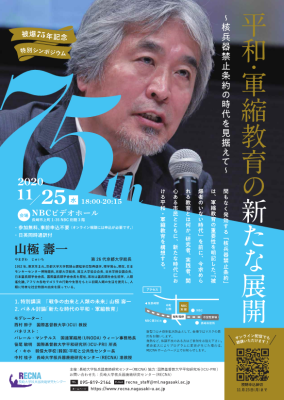このワーキングペーパーは、「被爆75年記念事業 ナガサキ・核とパンデミック・シナリオプロセス」のために執筆されたもので、RECNA、ノーチラス研究所、アジア太平洋核不拡散・軍縮ネットワーク(APLN)のウエブサイトに同時に公開されます。国際著作権許可4.0 に基づいて公開されます。
米国のパンデミック対応と大規模核戦争
Lynn Eden
(要旨)
本論文は、米国に焦点をあて、「パンデミック」のように極めてまれに起こる「惨事」を把握、防止、準備して、その害を緩和させるか、という計画立案と、大規模な「核戦争」に勝ち残るための計画立案が、いかに異なるかについて検討したものである。パンデミックへの対策を準備し、暗にその実行を示唆することは意味があるといえる。しかし、核戦争計画は、その計画が実行されないときにのみ、意味があるといえるのだ。
この両方の計画において、多くの犠牲者が予想される。しかし、その規模はけた違いとなる。防止策や緩和策、という言葉は共通であっても、パンデミックの可能性は我々の知識と社会・政治的行動に大きく依存している。一方、核戦争を戦い、そして「勝ち残る」ための「実行可能な」詳細計画を構築する理由は、敵国に対し、「敵国」が自分たちや同盟国を攻撃しないと脅かすためなのである。パンデミックに対しては、脅かすことにより、攻撃を抑止することはできない。しかし、敵国を壊滅させるとの想定で作られた核戦争計画が敵国の攻撃を抑止できないと、その計画は想像もできない全人類の破滅につながることが確実なのである。
トランプ政権が、パンデミックに対して準備ができていなかったことは不可解である。米国の核戦争計画を構築している人たちが、自分たちが何を計画しているのかを理解して行動していることも不可解である。本論文はこの両方を検討している。
キーワード: パンデミック、シナリオ、政府組織、米国の核戦争計画、立案者、結果、測定、感情の排除、ユーモア
著者紹介: リン・エデン博士は、米ミシガン大学で社会学博士号を取得、現在は米スタンフォード大学名誉研究員。主な研究分野は、社会学、歴史学、政治学の接点についての研究である。過去、ほとんどの研究歴は、スタンフォード大学フリーマン・スポルギ国際研究所国際安全保障と協力研究センター(CISAC)で過ごしてきた。CISACでは長い間副センター長を勤めた。その前には、カーネギーメロン大学の歴史学科で教鞭をとっていた。主に、狭いコミュニティの人々がどのように計画・行動し、他の人々に害を与えるかについて多くの論文を執筆してきた。最初の著作は「ウォータータウンにおける危機」で、全米図書賞の最終候補に選出されている。また、KKK(Ku Klux Klan)による、ミシシッピー州シュヴェルナー、チェイニー、グッドマン公民権運動殺人事件についても論文を執筆している。ほとんどの著作は、米国政治、核軍備管理、そして米国の外交・軍事政策に係るものである。「全世界が攻撃対象:組織、知識、核兵器のもたらす壊滅」は、科学技術に関する研究図書として、2004年のロバート・K・マートン最優秀作品賞を受賞している。歴史資料と個別インタビューをもとに、エデン氏は現在、核戦争に勝ち残るために、いかに倫理観の高い米国軍人が核戦争の運用計画を修正し、構築していくかについて、組織の日常作業や抑止論、冗談やユーモアを交えて執筆中である。
英語版のみとなりますが、全文(PDF)は こちら からご覧いただけます。

















